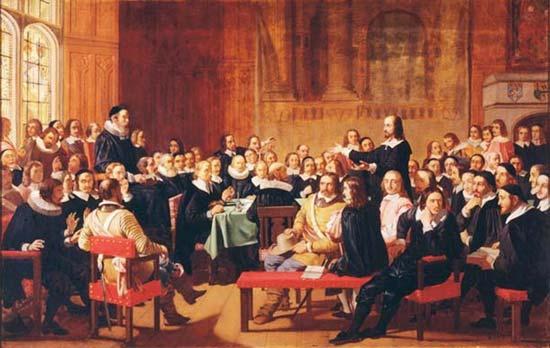When describing the political system and institutions of the European powers in the Middle Ages, we often come across the concept of “class monarchy”. This form of government was typical of France, Russia, Germany, etc. In this article we will discuss what the "class monarchy" is, consider its features and implementation on the examples of medieval countries.
Definition of a concept
The monarchy is a form of government, in which the supreme power is in the hands of one person and is inherited. Traditionally, it is divided into several types: absolute, early feudal, patrimonial, estate-representative, theocratic. So what is a class monarchy? This is a form of government that was prevalent in the Western European powers in the Middle Ages. It is characterized by the participation of representatives of different (or one) classes in the governance of the country. These bodies could carry out legislative and advisory functions.
Characteristic
1. The limited power of the monarch.
2. The division of the population of the state into estates.
3. Centralization of management.
4. The presence of politically active people from different classes.
5. The delineation of functions of state administration between the monarch and the representative body.
In order to better understand what the class monarchy is, it is necessary to consider its characteristics on the examples of medieval countries.
Class Monarchy in England
This form of government took shape in England by the 13th century. Until that time, feudal estates had already taken shape in the country. The top of the society consisted of barons. A significant role in the economic life of England began to play the nobility. In addition, the gentry and the city elite strengthened their positions. Under John the Landless, the feudal estates began a struggle against the supreme power. Already in the 60s. XIII century she grew into a civil war. The result of this struggle was the creation in 1295 of the “Model” parliament. Its structure included large spiritual and secular feudal lords. During the period of estate-representative monarchy, the functions of the English parliament were to determine the amount of taxes and to control the highest officials. Later, this body received the right to participate in the adoption of laws. In the XIV century. under Edward III, the parliament was divided into two chambers: communities and lords. The first consisted of knights and philistines, the second - of barons or hereditary peers (in a later period).

Class Monarchy in France
The first estate representative body of the country was created during the time of Philip IV. Since 1484, it became known as the General States. It should be noted that this body was in close alliance with the royal power and actually expressed its interests. As part of the General States, all three French estates were represented (clergy, nobility and the "third"). The king, as a rule, used the General States for support in different situations. He even asked the opinion of the estates about the laws, although their adoption did not require the consent or approval of this body. General states could also ask a representative of the highest authority for requests or protests. People from different classes gathered and discussed issues separately. This did not exclude conflicts between social groups. Since the end of the XIII century. in France, provincial (local) states begin to gather. A large role among them in the XV century. played the Paris Parliament.
Estates Monarchy in Russia
In Russia, this form of government arises in 1569, when Ivan the Terrible convened the first Council. It should be noted that the formation of representative bodies in this state had its own characteristics. Unlike the European powers, in Zemstvo councils did not limit the power of the king. This authority included the Boyar Duma, the Consecrated Cathedral and elected people from the middle class and noblemen. The bodies of the estate monarchy in Russia were convened by special order of the tsar. Zemsky cathedrals were called upon to discuss the most important national issues. They made decisions in the field of foreign and tax policy, and also elected the head of state. So, B. Godunov, V. Shuisky and M. Romanov came to the throne at the invitation of the Zemsky Cathedral.
Since the 30s of the XVI century. in Russia there was an order system. It was most actively formed during the reign of Ivan the Terrible. Orders were both judicial and administrative authorities and were created in all territorial units.
Estates Monarchy in Germany
The main estate representative body in Germany was the Reichstag. Unlike similar institutions in England and France, it consisted solely of "imperial ranks" that could not become an expression of the interests of the whole people. The Reichstag took shape by the XIV century. and included three curiae: imperial princes, electors, imperial cities. The first role played in the life of the state. The curia of the imperial cities did not have a decisive voice in any matters. Her activities were subordinated to the politics of the princes.
The Reichstag was convened by the emperor twice a year. Representatives of different curiae gathered and made decisions separately. The Reichstag did not have strictly defined functions. This body together with the emperor discussed foreign policy, military, financial or territorial problems. However, his influence on state affairs was minimal.
conclusions
Thus, in order to understand what class monarchy is, it is necessary to analyze its functioning using examples from different countries. In the states under consideration, representative authorities formed by the XIII-XV centuries. Their composition, as a rule, included representatives of all classes. However, during the adoption of any decisions, the main word was for the nobility and clergy.